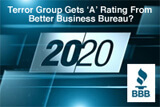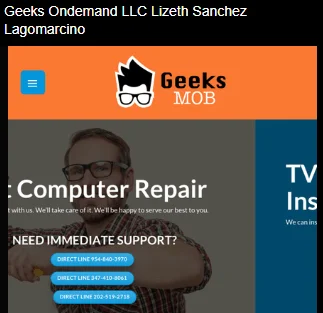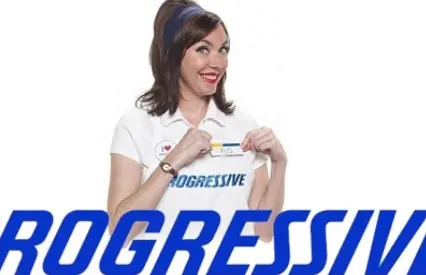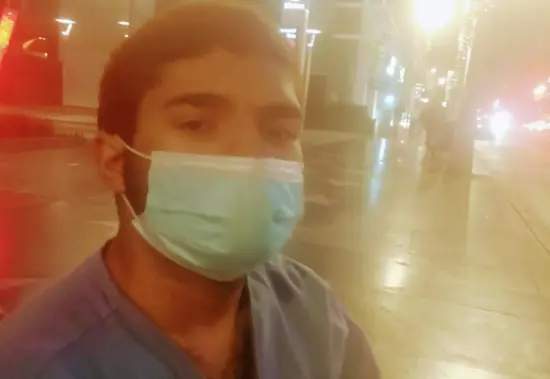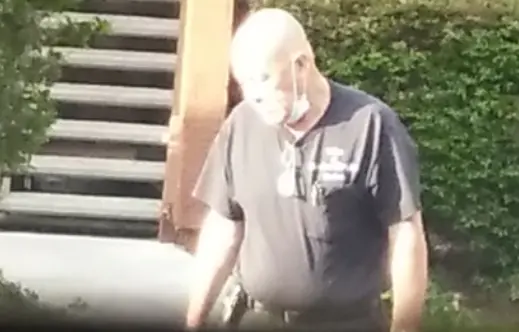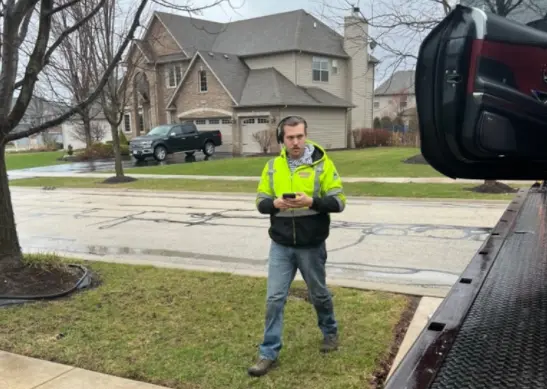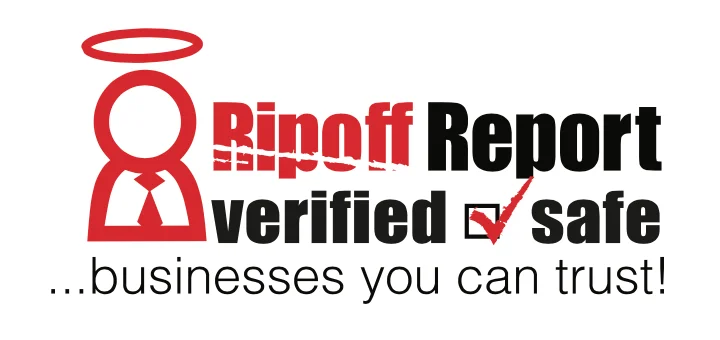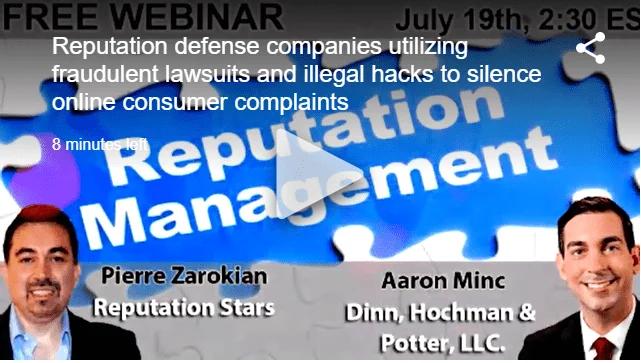Complaint Review: Shore Funding Solutions Inc and Gina Monteforte - Melville New York
- Shore Funding Solutions Inc and Gina Monteforte 3 Huntington Quad, 407 N Melville, New York United States
- Phone: 800-980-0472
- Web: http://shorefundingsolutions.com/
- Category: Loans, Short term loan scams, Loan offer
Shore Funding Solutions Inc and Gina Monteforte Telemarketing in violation of 47 USC §227 of TCPA by Shore Funding and Gina Monteforte Melville New York
listed on other sites?
Those sites steal
Ripoff Report's
content.
We can get those
removed for you!
Find out more here.
Ripoff Report
willing to make a
commitment to
customer satisfaction
Click here now..
Telemarketing in violation of 47 USC §227 of TCPA by Shore Funding and Gina Monteforte
I was called and called and called by Shore Funding Solutions. It is not a shock to see that they are being sued in a class action lawsuit in New York for TCPA violations. The case number is 17-CV-02080-ADS-AKT if you need proof.
Gina Monteforte is a mean and nasty person. If you get called, sue. Sue them until they stop calling.
In 2014, the 9th Circuit in Gomez v. Campbell-Ewald Co. (9th Cir. 2014) 768 F.3d 871, 878, regarding TCPA vicarious liability held:
“[t]his interpretation is consistent with that of the statute's implementing agency, which has repeatedly acknowledged the existence of vicarious liability under the TCPA. The Federal Communications Commission is expressly imbued with authority to "prescribe regulations to implement the requirements" of the TCPA. 47 U.S.C. § 227(b)(2). As early as 1995, the FCC stated that "[c]alls placed by an agent of the telemarketer are treated as if the telemarketer itself placed the call." In re Rules and Regulations Implementing the TCPA of 1991, 10 FCC Rcd. 12391, 12397 (1995).
More recently, the FCC has clarified that vicarious liability is imposed "under federal common law principles of agency for violations of either section 227(b) or section 227(c) that are committed by third-party telemarketers." In re Joint Petition Filed by Dish Network, LLC, 28 FCC Rcd. 6574, 6574 (2013). Because Congress has not spoken directly to this issue and because the FCC's interpretation was included in a fully adjudicated declaratory ruling, the interpretation must be afforded Chevron deference. Metrophones Telecomm., Inc. v. Global Crossing Telecomm., Inc., 423 F.3d 1056, 1065 (9th Cir. 2005) (citing Nat'l Cable & Telecomms. a*s'n v. Brand X Internet Servs., 545 U.S. 967, 980-85, 125 S. Ct. 2688, 162 L. Ed. 2d 820 (2005)) (other citations omitted), aff'd, 550 U.S. 45, 127 S. Ct. 1513, 167 L. Ed. 2d 422 (2007)” See alsoRestatement (Third) of Agency (2006) §§ 2.01, 2.03, 4.01 (explaining that agency may be established by express authorization, implicit authorization, or ratification)."
The FCC also recognized that “wireless customers are charged for incoming calls whether they pay in advance or after the minutes are used.” In re Rules and Regulations Implementing the Tel. Consumer Prot. Act of 1991, CG Docket No. 02-278, Report and Order, 18 F.C.C. Rcd. 14014, 14115 ¶ 165 (2003).
Standing is proper under Article III of the Constitution of the United States of America because Plaintiff’s claims state:
A valid injury in fact;
which is traceable to the conduct of Defendants;
and is likely to be redressed by a favorable judicial decision. See, Spokeo, Inc. v. Robins, 578 U.S.____(2016) at 6, and Lujan v. Defenders of Wildlife, 504 U.S. 555 at 560. In order to meet the standard laid out in Spokeo and Lujan, Plaintiffs must clearly allege facts demonstrating all three prongs above.
The “Injury in Fact” Prong.
Plaintiff’s injury, in fact, must be both “concrete” and “particularized” in order to satisfy the requirements of Article III of the Constitution, as laid out in Spokeo (Id.). For an injury to be “concrete,” it must be a de facto injury, meaning that it actually exists. In the present case, Plaintiff was called on his cellular phone at least five (5) times by Defendants. In fact, Plaintiff expressly informed Defendants to cease and desist from all future telemarketing on the very first call. Such calls are a nuisance, an invasion of privacy, and an expense to Plaintiff in multiple ways. Soppet v. Enhanced Recovery Co., LLC, 679 F.3d 637, 638 (7th Cir. 2012). Defendant’s invasion of Plaintiff’s right to privacy is further exacerbated by the fact that Plaintiff’s phone number, at all times relevant to this litigation, was on the National Do-Not-Call Registry ( hereinafter, “DNC Registry”). As well, Plaintiff had no prior business relationship with Defendants prior to receiving the seriously harassing and annoying calls as well as the extortionate threats by Prosperify. All of Plaintiff’s injuries are concrete and de facto. For an injury to be “particularized” means that the injury must “affect the plaintiff in a personal and individual way.” Spokeo, Inc. v. Robins, 578 U.S. ___ (2016) at 14. In the instant case, it was Plaintiff’s phone that was called and it was Plaintiff himself who answered the calls. It was Plaintiff’s personal privacy and peace that was invaded by Defendant’s persistent phone calls using an ATDS and a pre-recoded message, despite Plaintiff having no prior business relationship with Defendants and Plaintiff’s attempt to avoid the damage by registering his number on the DNC Registry. Finally, Plaintiff alone is responsible to pay the bill on his cellular phone, his home phone and to pay the bill for his electric utility company kilowatt-hour power usage. All of these injuries are particularized and specific to Plaintiff and will be the same injuries suffered by Plaintiff.
The “Traceable to the Conduct of Defendants” Prong
The second prong required to establish standing at the pleadings phase is that Plaintiff must allege facts to show that his injury is traceable to the conduct of Defendants. In the instant case, this prong is met by the fact that the calls to Plaintiff’s cellular phone and home phone (land line) were placed either by Defendants directly, or by Defendants’ agent at the direction of Defendants.
The “Injury is Likely to be Redressed by a Favorable Judicial Opinion” Prong
The third prong to establish standing at the pleadings phase requires Plaintiff to allege facts to show that the injury is likely to be redressed by a favorable judicial opinion. In the present case, Plaintiff’s Prayers for Relief include a request for damages for each call made by Defendants, as authorized by statute in 47 U.S.C. § 227. The statutory damages were set by Congress and specifically redress the financial damages suffered by Plaintiff. Furthermore, Plaintiff’s Prayers for Relief request injunctive relief to restrain Defendants from the alleged abusive practices in the future. The award of monetary damages and the order for injunctive relief redress the injuries of the past and prevent further injury in the future. Because all standing requirements of Article III of the U.S. Constitution have been met, as laid out in Spokeo, Inc. v. Robins, 578 U.S. ___ (2016), Plaintiff has standing to sue Defendants on the stated claims.
“…[C]ourts in the Ninth Circuit have held that "allegations of nuisance and invasions of privacy in TCPA actions are concrete" injuries that establish standing. See Mbazomo v. ETourandtravel, Inc., 16-CV-2229-SB, 2016 U.S. Dist. LEXIS 170186, 2016 WL 7165693, at *2 (E.D. Cal. Dec. 8, 2016); Cabiness v. Educ. Fin. Sols., LLC, 16-CV-1109-JST, 2016 U.S. Dist. LEXIS 142005, 2016 WL 5791411, at *5 (N.D. Cal. Sept. 1, 2016); Juarez v. Citibank, N.A., No. 16-CV-1984-WHO, 2016 U.S. Dist. LEXIS 118483, 2016 WL 4547914, at *3 (N.D. Cal. Sept. 1, 2016); Hewlett v. Consolidated World Travel, Inc., 16-713 WBS AC, 2016 U.S. Dist. LEXIS 112553, 2016 WL 4466536, at *2 (E.D. Cal. Aug. 23, 2016); Cour v. Life360, Inc., 16-CV-00805-TEH, 2016 U.S. Dist. LEXIS 98945, 2016 WL 4039279, at *2 (N.D. Cal. July 28, 2016); Booth v. Appstack, Inc., No. 13-1553JLR, 2016 U.S. Dist. LEXIS 68886, 2016 WL 3030256, at *7 (W.D. Wash. May 25, 2016). In Mbazamo, the court held that a violation of the TCPA represents a concrete injury because "[t]he history of sustaining claims against both unwelcome intrusion into a plaintiff's seclusion and unceasing debt-collector harassment are squarely 'harm[s] that [have] traditionally been regarded as providing a basis for a lawsuit.'" Mbazomo, 2016 U.S. Dist. LEXIS 170186, 2016 WL 7165693, at *2 (quoting Spokeo, 136 S.Ct. at 1549-50). The court declined to follow Romero, explaining that Romero "improperly erodes the pleading standard set under Fed. R. Civ. P. 8(a) . . . . A plaintiff [need only] plausibly tie the alleged acts of the defendant to the alleged harms suffered." Id.
Similarly, in Cabiness, the court held that a violation of the TCPA represents a concrete injury because "[e]every unconsented call through the use of an ATDS to a consumer's cellular phone results in actual harm: the recipient wastes her time and incurs charges for the call if she answers the phone, and her cell phone's battery is depleted even if she does not answer the phone . . . . unsolicited calls also cause intangible harm by annoying the consumer." Cabiness, 2016 U.S. Dist. LEXIS 142005, 2016 WL 5791411, at *5 (internal citations omitted). And in Juarez, the court held that the plaintiff's allegation "that he received repeated unwanted calls that caused him aggravation, nuisance, and an invasion of privacy, is sufficient to allege a 'concrete' and 'particularized' injury that establishes standing under Spokeo." Juarez, 2016 U.S. Dist. LEXIS 118483, 2016 WL 4547914, at *3.
Messerlian v. Rentokil N. Am., Inc. (C.D.Cal. Dec. 15, 2016, No. CV 16-6941-GW (GJSx)) 2016 U.S.Dist.LEXIS 175224, at *7-8.
“To establish injury in fact, a plaintiff must show that he or she suffered ‘an invasion of a legally protected interest’ that is ‘concrete and particularized’ and ‘actual or imminent, not conjectural or hypothetical.’” Spokeo. at 1548 (quoting Lujan, 504 U.S. at 560). The Supreme Court noted that concreteness is quite distinct from particularization. Id. An injury is “particularized” if it affects “the plaintiff in a personal and individual way.” Id. In addition, for an injury to be “concrete”, it must be “de facto,” meaning that it is “real” and not “abstract.” Id. However, an injury need not be “tangible” in order to be “concrete,” and intangible injuries may constitute injury in fact. Id. at 1549. In order to determine whether an intangible harm constitutes injury in fact, Spokeo provided two factors to be considered: “history and the judgment of Congress.” Id. at 1549. Specifically, “(1) whether the statutory violation bears a ‘close relationship to a harm that has traditionally been regarded as providing a basis for a lawsuit in English or American courts,’ and (2) congressional judgment in establishing the statutory right, including whether the statutory right is substantive or procedural.” Matera v. Google, No. 15cv 4062-LHK, 2016 WL 5339806, at *9 (N.D. Cal. Sept. 23, 2016). Spokeo also held that “the violation of a procedural right granted by statute can be sufficient in some circumstances to constitute injury in fact.” Spokeo, 136 S. Ct. at 1549. In such a case, a plaintiff “need not allege any additional harm beyond the one [the legislature] has identified.” Id. PC 632.7
Under Federal Rule of Civil Procedure 8(a)(2), the plaintiff is required only to set forth a “short and plain statement of the claim showing that the pleader is entitled to relief,” and “give the defendant fair notice of what the . . . claim is and the grounds upon which it rests.” Bell Atlantic Corp. v. Twombly, 550 U.S. 544, 555 (2007). A Complaint may survive a Motion to Dismiss if, taking all well-pleaded factual allegations as true, it contains enough facts to “state a claim to relief that is plausible on its face.” Ashcroft v. Iqbal, 556 U.S. 662, 678 (2009) (quoting Twombly, 550 U.S. at 570). “A claim has facial plausibility when the plaintiff pleads factual content that allows the court to draw the reasonable inference that the defendant is liable for the misconduct alleged.” Id. “In sum, for a complaint to survive a Motion to Dismiss, the non-conclusory factual content, and reasonable inferences from that content, must be plausibly suggestive of a claim entitling the Plaintiff to relief.” Moss v. U.S. Secret Serv., 572 F.3d 962, 969 (9th Cir. 2009) (quotations omitted). In reviewing a Rule 12(b)(6) motion, the Court must accept as true all facts alleged in the complaint and draw all reasonable inferences in favor of the Plaintiff. al-Kidd v. Ashcroft, 580 F.3d 949, 956 (9th Cir. 2009). The court must evaluate lack of statutory standing under the Rule 12(b)(6) standard. Maya v. Centex Corp., 658 F.3d 1060, 1067 (9th Cir. 2011). However, because Plaintiff is proceeding pro se, his complaint “must be held to less stringent standards than formal pleadings drafted by lawyers” and must be “liberally construed.” Erickson v. Pardus, 551 U.S. 89, 94 (2007) (per curiam) (reaffirming standard reviewing pro se complaints post-Twombly). The Ninth Circuit has concluded that the court's treatment of pro se filings after Twombly and Iqbal remain the same and pro se pleadings must continue to be liberally construed. Hebbe v. Pliler, 627 F.3d 338, 342 (9th Cir. 2010); see also McGowan v. Hulick, 612 F.3d 636, 640-42 (7th Cir. 2010); Bustos v. Martini Club Inc., 599 F.3d 458, 461-62 (5th Cir. 2010); Harris v. Mills, 572 F.3d 66, 71-72 (2d Cir. 2009) (noting that even following Twombly and Iqbal, “we remain obligated to construe a pro se complaint liberally”).
As the Court unanimously held in Haines v. Kerner, 404 U.S. 519 (1972), a pro se complaint, "however inartfully pleaded," must be held to "less stringent standards than formal pleadings drafted by lawyers" and can only be dismissed for failure to state a claim if it appears "'beyond doubt that the plaintiff can prove no set of facts in support of his claim which would entitle him to relief.'" Id., at 520-521, quoting Conley v. Gibson, 355 U.S. 41, 45-46 (1957).” Estelle v. Gamble (1976) 429 U.S. 97, 106 [97 S.Ct. 285, 292, 50 L.Ed.2d 251, 261].
“The plausibility standard ‘calls for enough fact to raise a reasonable expectation that discovery will reveal evidence’ of the defendant’s liability.” Miyahira v. Vitacost.com, Inc., 715 F.3d 1257, 1265 (11th Cir. 2013) (quoting Twombly, 550 U.S. at 556). The Federal Communications Commission (“FCC”)—which has authority to implement the TCPA’s provisions, see 47 U.S.C. § 227(b)(2)— has stated that a plaintiff, to establish a TCPA violation, “need only show that [the Defendant] called a number assigned to a cellular telephone service using an automatic dialing system or prerecorded voice.” Breslow v. Wells Fargo Bank, N.A., 857 F. Supp. 2d 1316, 1319 (S.D. Fla. 2012) (quoting In re Rules and Regulations Implementing the Tel. Consumer Prot. Act of 1991, 23 FCC Rcd. 559, 564 (F.C.C. 2008)).DoNotCall.gov
Importantly, “prior express consent is an affirmative defense, not an element of the claim,” meaning a plaintiff “need not plead that he did not give his prior express consent.” Manfred v. Bennett Law, PLLC, No. 12–CV–61548, 2012 WL 6102071, at *2 (S.D. Fla. Dec. 7, 2012). Rather, “[t]he only thing [a] [p]laintiff must plead to establish a violation of the TCPA is that the [d]efendants left voicemail messages at a number assigned to a cellular telephone service using an automatic dialing system or an artificial or pre-recorded voice.” Id. (denying motion to dismiss for failure to state a claim where the plaintiff alleged “that [the] [d]efendants used an Automatic Telephone Dialing System or an artificial or pre-recorded voice to place the telephone calls to [the] [p]laintiff’s cellular phone.”).
The FCC regulations also “generally establish that the party on whose behalf a solicitation is made bears ultimate responsibility for any violations.” In the Matter of Rules and Regulations Implementing the Tel. Consumer Prot. Act of 1991, CG Docket No. 92-90, Memorandum and Order, 10 F.C.C. Rcd. 12391, 12397 ¶ 13 (1995). 13. The FCC confirmed this principle in 2013, when it explained that “a seller …. may be held vicariously liable under federal common law principles of agency for violations of either section 227(b) or section 227(c) that are committed by third-party telemarketers.” See In the Matter of the Joint Petition Filed by Dish Network, LLC, 28 F.C.C. Rcd. 6574, 6574 (2013).
47 C.F.R. 64.1200(c)(2) prohibits calling any number on the national Do-Not-Call Registry. 47 C.F.R. 64.1200(a)(1)(iii) states that no person or entity may initiate any commercial purpose telephone call to any cellular telephone that is already on the national Do-Not-Call Registry.
This report was posted on Ripoff Report on 12/05/2017 04:14 PM and is a permanent record located here: https://www.ripoffreport.com/reports/shore-funding-solutions-inc-and-gina-monteforte/melville-new-york-11747/shore-funding-solutions-inc-and-gina-monteforte-telemarketing-in-violation-of-47-usc-22-1415222. The posting time indicated is Arizona local time. Arizona does not observe daylight savings so the post time may be Mountain or Pacific depending on the time of year. Ripoff Report has an exclusive license to this report. It may not be copied without the written permission of Ripoff Report. READ: Foreign websites steal our content
If you would like to see more Rip-off Reports on this company/individual, search here:
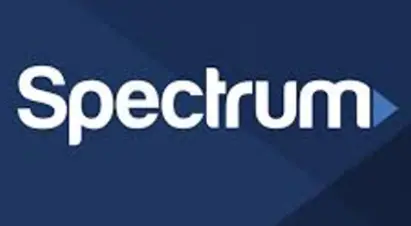
Advertisers above have met our
strict standards for business conduct.










